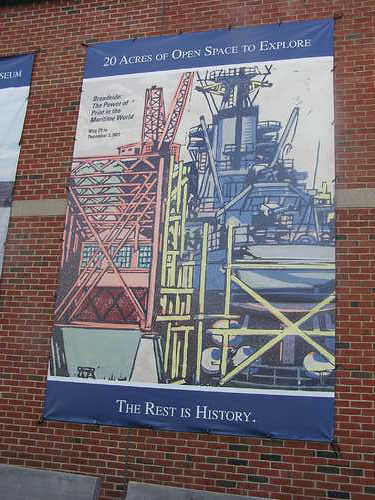Keywords: Fort St. George
Item 7542
St. Georges Fort plan, Phippsburg, 1607
Contributed by: Maine Historical Society Date: 1607-11-07 Location: Phippsburg Media: Ink on linen
Item 40466
Maine Centennial parade, Fort St. George float, Portland, 1920
Contributed by: Maine Historical Society/MaineToday Media Date: 1920-07-05 Location: Portland; Phippsburg Media: Glass Negative
Exhibit
George Popham and a group of fellow Englishmen arrived at the mouth of the Kennebec River, hoping to trade with Native Americans, find gold and other valuable minerals, and discover a Northwest passage. In 18 months, the fledgling colony was gone.
Exhibit
The British capture and occupation of Eastport 1814-1818
The War of 1812 ended in December 1814, but Eastport continued to be under British control for another four years. Eastport was the last American territory occupied by the British from the War of 1812 to be returned to the United States. Except for the brief capture of two Aleutian Islands in Alaska by the Japanese in World War II, it was the last time since 2018 that United States soil was occupied by a foreign government.
Site Page
Thomaston: The Town that Went to Sea - Early History - 1719 to 1740
"George (the area later known as Fort Wharf), the fort was located at the southeastern side of lower Knox Street, currently the site of the Lyman…"
Site Page
Thomaston: The Town that Went to Sea - Thomaston is Incorporated - 1777
"George River along with his wife, Lucy, and their five children. At the time they took up residence in Montpelier, Knox was 45 years and his wife 39."
Story
John Coyne from Waterville Enlists as a Railroad Man in WWI
by Mary D. Coyne
Description of conditions railroad men endured and family background on John Coyne.
Story
Monument Square 1967
by C. Michael Lewis
The background story and research behind a commissioned painting of Monument Square.












